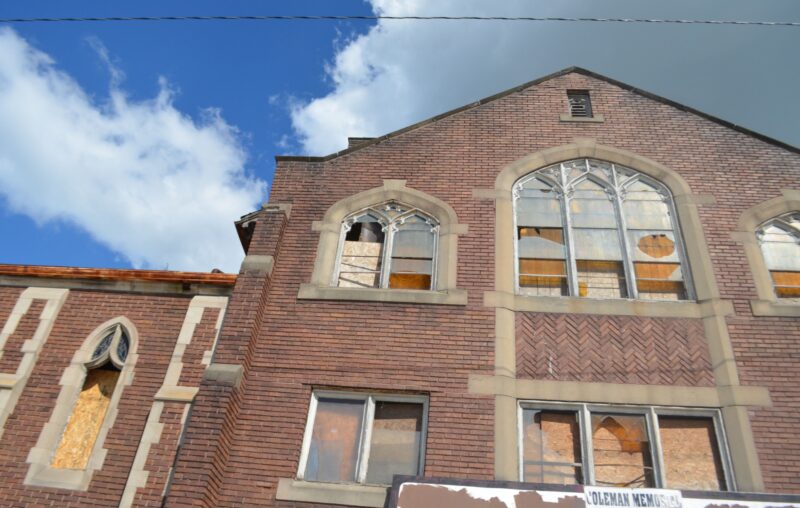Weaving Stable Neighborhoods

At a recent poverty alleviation training with The Chalmers Center, a group of neighborhood stabilization practitioners were presented with a broad philosophical and theological framework before they delved into the nitty-gritty of how to do benevolence ministry in a dignifying way, one that moves people in the direction of participation in the solutions to their own life. At the outset, quotes from interviews with the abject poor were projected onto the big screen. Only one person in ten mentioned their lack of money or resources. They focused on shame, feeling trapped, feeling alone, and feeling useless. The materially poor are not necessarily focused on their lack of things, but rather, on their lack of hope. It’s a reminder that the most concerning forms of poverty arise when there is so much disconnection between people that they fall into despair. This means that while serious material poverty will often lead to far worse measurable outcomes, many middle and upper-income people will experience the loneliness and hopelessness — living lives of quiet desperation — while some relatively poor people will live lives full of joy and loving connection. Rising loneliness, addiction and other mental health crises in America’s suburbs demonstrate that our concept of poverty needs to shift and expand, perhaps to include ourselves.
In Fragile Neighborhoods: Repairing American Society, One Zip Code at a Time, Seth Kaplan brings both a diagnosis and a whole lot of hope straight from the streets. He opens with a helpful distinction between vertical and horizontal solutions. We often contrast ‘top-down’ solutions — usually implying government programs or massive, coordinated philanthropic projects — with ‘bottom-up’ ones. We mean that individual charities, or even families and churches, are the key to flourishing, and that sometimes the big policy solutions actually undermine these more organic institutions. But Kaplan is right to emphasize the horizontal, by which he means the strong connections between families, churches, charities, and other social institutions he calls “social repairers.”
I immediately perked up at his use of the term ‘horizontal solutions,’ because I’ve been listening closely to neighborhood practitioners for the last couple of years. Those churches, organizations, and persons of peace living and working in America’s most destabilized neighborhoods are all telling me the same thing. They’re saying that what they need is connection to one another. They do not mean that they all need to be one big organization, or that there needs to be some expertly planned agenda for the region that they can join. They mean that they need to know that they’re not alone, they need to work and plan together, and they need to know the good that is also happening in the neighborhoods touching theirs.
When one middle school student needed a place to live, he got help from LOVETheLOU, the group working directly on his block. To continue growing, he needed to change high schools, so he went to live at Boys Hope, Girls Hope just a few miles away, while continuing in the LOVETheLOU youth programs. As he finishes up his college degree, he is now working, while living at A Seat at the Table, a local organization that helps fairly stable 18-25 year olds make the successful transition into adult life through the experience of a close and loving, Christian home. I wouldn’t be surprised if there were more organizations involved in his story that I don’t even know about.
With almost no parental support, it’s not clear whether that student would have made it past each obstacle if there were only one resource to draw upon. But because the leaders of these organizations are all deeply involved with one another, he was able to benefit from all of them without ever feeling that he was being ‘passed off’ to a bunch of strangers. Each of these interventions in his life occurred within a few square miles of one another, through organizations that work on one or two blocks, or with a house of five or six young people at a time. We know that it’s this kind of long-term, face-to-face, personal presence that really makes a difference in the lives of kids from radically destabilized neighborhoods. But what we often forget is that the hyper-local, decentralized nature of the really effective organizations can also make their leaders and staff feel isolated and desperate. Weaving them together so that they can encourage one another and develop together makes their Herculean efforts sustainable. As the wise sage said, “…a rope that is woven of three strings is hard to break.”
Kaplan goes on to echo some of the main takeaways from the men I call the “prophets of neighborhood stabilization,” like Marvin Olasky, Brian Fikkert, Bob Lupton, and Bob Woodson. Rather than focusing primarily on problems, a horizontal approach necessitates mapping a neighborhood’s assets. It forces us to ask ourselves, “what does this neighborhood already have going that we can help to support, connect, and empower?”
Another advantage to the horizontal approach is that it tends to be apolitical. While might associate the top-down approach with the political left, and the bottom-up with the right, cooperation between peer organizations, blocks, and even denominations finds strength in spite of some disagreements. We may still hold strong political beliefs and fight hard for them, but on the level of the street, we are too busy loving people to yell at them about policy. Our co-laborers with eye-rolling ideas about politics are too valuable to us for their charisma with the kids, or their expertise on gardening or woodworking to demur over such matters.
The same goes for the book itself. Kaplan is open to a wide range of explanations, and some readers will certainly favor certain explanations over others. But the person who cares deeply about the terrible poverty, despair, crime, and educational malfeasance occurring in our toughest neighborhoods will care less about his or her own ideological narrative and more about anything and everything that will increase our understanding and lead to more effective solutions.
The second half of the book is spent on Kaplan’s research into what has worked all over the country, homing in on our most vital institutions: family, church, school, and neighborhood (and it should be noted that Kaplan himself is a practicing Jew, so he’s using the term ‘church’ here loosely). Any one of these chapters is worth the price of the book. Kaplan gathers the various insights we’ve gained from social science to demonstrate the importance of each of these for the kind of connection we need. Rather than repeat all of those arguments here, I’ll emphasize the incredible hope that comes in this section, as Kaplan regales the reader with the stories of various truly effective organizations working on a wide range of problems by implementing the ‘sideways’ approach. As he recalls the struggles and successes of efforts from Detroit to Atlanta to New York City, he then extracts the hard-won operational lessons they learned along the way through trial and error. These include things like focusing on kids, and especially boys, to address the neighborhood’s future at its roots.
He also suggests addressing multiple issues at the same time. It’s common to found a charitable effort that does just one thing, like opening a clinic, or connecting reentering citizens with jobs. Similarly, we can become hyper-focused on certain policy issues in our political efforts. But the residents of a deeply destabilized neighborhood are not dealing with simply a lack of health care or trouble finding a job. They’re dealing with both of those things, along with several others, including bad policies that undermine local economic growth. Connecting complementary programs or starting hyper-local but holistic programs will be more effective. Why? Because one frustrating obstacle can undo years of investment into a neighbor’s life. Knowing where to go when new and different obstacles arise allows each neighbor to keep moving forward toward stability.
Two especially compelling suggestions have to do with religion and politics. Kaplan knows that religious organizations provide meaning and structure to people’s lives. He notes that all of his examples of successful social repair are either explicitly religious organizations, or were started by a person of passionate faith. There is simply no equivalent source of community and generosity than one’s religious community. He also notes that many government efforts, though well-intentioned and perhaps effective in achieving short term goals, have actually derailed the most effective private efforts by centralizing them. Government grants standardize goals and pull private charities off-mission and away from strategies that are sensitive to the particular circumstances of the neighborhood. Kaplan has a vision for pushing government support to decentralize, localize, and delegate to trusted neighborhood leaders. He envisions standards that value incremental movement in the direction of stabilization as opposed to predetermined mandates. I have my doubts that such a system could ever be implemented through state mechanisms; bureaucrats aren’t incentivized (Nor perhaps even equipped) to measure organic relationships and the fostering of genuine community. But if we’re going to spend the money, I’d certainly rather we try to implement Kaplan’s vision than continue down our current road of one-size-fits-all hand-outs.
I cannot more highly recommend this book, which takes seriously questions of what poverty really is and how it’s actually addressed. Anyone meaningfully engaging with questions of poverty alleviation needs to read and contend with Kaplan’s research and take-aways. It’s simply unconscionable that so many of us continue to invest our charitable time and treasure into projects that undermine social cohesion rather than building it. I’d say that we ought to be ashamed of ourselves, but the truth is that rebuilding deeply destabilized neighborhoods is much harder and more complicated than running the annual coat drive. Thinkers like Kaplan are grappling with the building process in a deep and thoughtful way that will serve us well as we shift our own efforts to a healthier and more dignifying paradigm.










